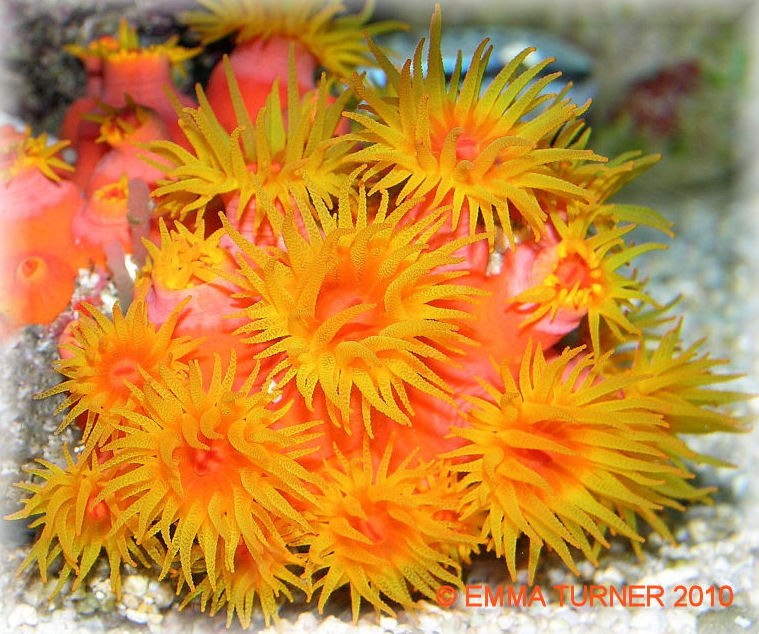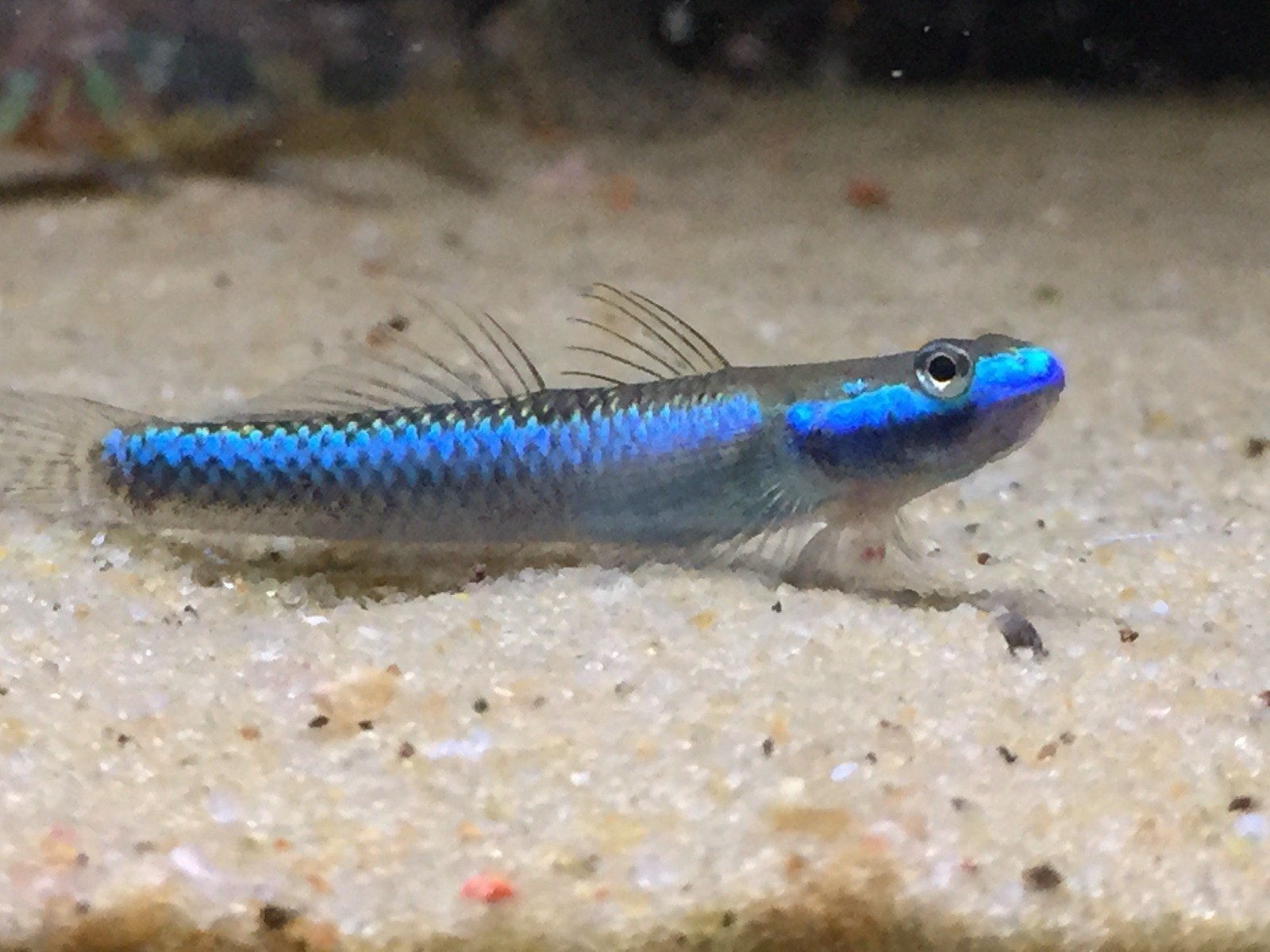Caring for your Marine Fish and Invertebrates
It’s normal for newly-added creatures to be shy at first and some will take longer to settle than others, so help them to make themselves at home without harassment from established fish. It may take a while before your new fish begin feeding, or for your new corals to get used to different lighting schedules, so don’t worry if they take some time to adjust and note that naturally shy or deep water species may take longer before becoming active during daylight hours. However you can help reduce stress by giving them plenty of safe hiding places and suitable company.
Feeding:
The territorial nature of marine fish and the appeal of mixing colours means that most marine tanks house a combination of species with different styles of feeding. Most aquarium reef fish are plankton feeders which eat lots of small food items throughout the day such as Chromis and Anthias, and these need regular, frequent meals to stay healthy. Popular “grazers” such as Dwarf angelfishes and Tangs spend lots of time picking at algae, sponges and other benthic items. This means it’s best to feed your marine fish little and often or give them specially-designed grazing foods that offer long periods of foraging.
Predators such as Grammas and Dottybacks eat larger meals less often and this reaches extremes in gross-feeding predators like Frogfish and Groupers.
Invertebrates are very varied when it comes to feeding, but most corals, anemones and giant clams are largely solar-powered thanks to symbiotic algae, so lighting is a vital part of a healthy reef tank. In addition to bright light, small-polyped corals and clams need fine planktonic food while anemones and large-polyped corals need larger food. This is especially vital for filter-feeding organisms that can’t “farm” algae.
Mobile invertebrates like shrimp, crabs and starfish often feed in similar ways to fish. Algae-eating “clean-up crew” might need the kinds of grazing foods used for fish with the same needs. You can ensure that snails, urchins and other specialist grazers don’t go hungry by stocking the right number for the size of your aquarium.
Huge advances have been made in aquarium fish nutrition and dried foods are nutritionally superior to frozen foods, so they should form your pets’ staple diet wherever possible. Frozen foods still have a role to play but should be part of a varied diet and you can boost them with vitamin supplements.
Compatibility:
Reef creatures evolved in one of the most competitive habitats on earth, so to minimise territorial aggression, it’s best to keep just one individual of any given species per tank unless advised otherwise. The good news is that varied shapes, colours and habits make for a more peaceful community with less territorial fighting.
Adding new livestock to established fish communities can be tricky but bullies can often be distracted with a mirror while a new fish finds shelter. There’s evidence to suggest that hungry fish are more aggressive, so make sure your pets don’t feel the need to guard limited resources.
Mixing invertebrates is generally less complex, but there can be aggression issues with species such as shrimps. Corals use a couple of weapons when battling neighbours, such as armed sweeper tentacles for hard corals and chemical weapons for soft ones. Ensure there’s sufficient space between corals and note that sweepers can be extended for some distance, especially when carried by a current.
Unsurprisingly, many reef species eat one another and even anemones and starfishes can be surprisingly predatory. This reaches new heights when combining fishes and invertebrates, with many species ignoring corals but readily eating small shrimps or crabs. Some useful specialists will eat pests such as Aiptasia anemones or flatworms without damaging corals, but it’s best to consult an experienced member of staff before adding a targeted predator.
Marine organisms are very diverse but here are some of the main groups with some notes on their care:
Fish:
Clownfish are a great species to start with as they’re very popular and a great choice. More suitable for aquarium care than goldfish, Common clowns (Amphiprion ocellaris) are the ‘Nemo’ familiar to children everywhere and are captive-bred in huge numbers. Available in a staggering range of man-made colour forms these fish naturally inhabit small territories and are reared on aquarium diets. Deeper-bodied species such as Tomato (A. frenatus) and Clark’s (A. clarkii) tend to be more aggressive, with the large Maroon clownfish (Premnas biaculeatus) being quite formidable.

Having never seen a reef, tank-bred clowns are perfectly happy to live without anemones, which are challenging to keep successfully as they need conditions suitable for corals, with the lighting adjusted to suit.
Damselfish are related to clowns but can be more territorial and aggressive, with some varieties best avoided completely. Good choices that can also help control pest flatworms include Springer’s (Chrysiptera springeri) and Allen’s damsels (Pomacentrus alleni). Green chromis (Chromis viridis) are placid plankton feeders that thrive in large groups. To help control territorial aggression, add damsels after more peaceful tank mates have become established and add a group of mixed sizes - a large damsel will intimidate smaller rivals of its kind and prevent any power struggles.
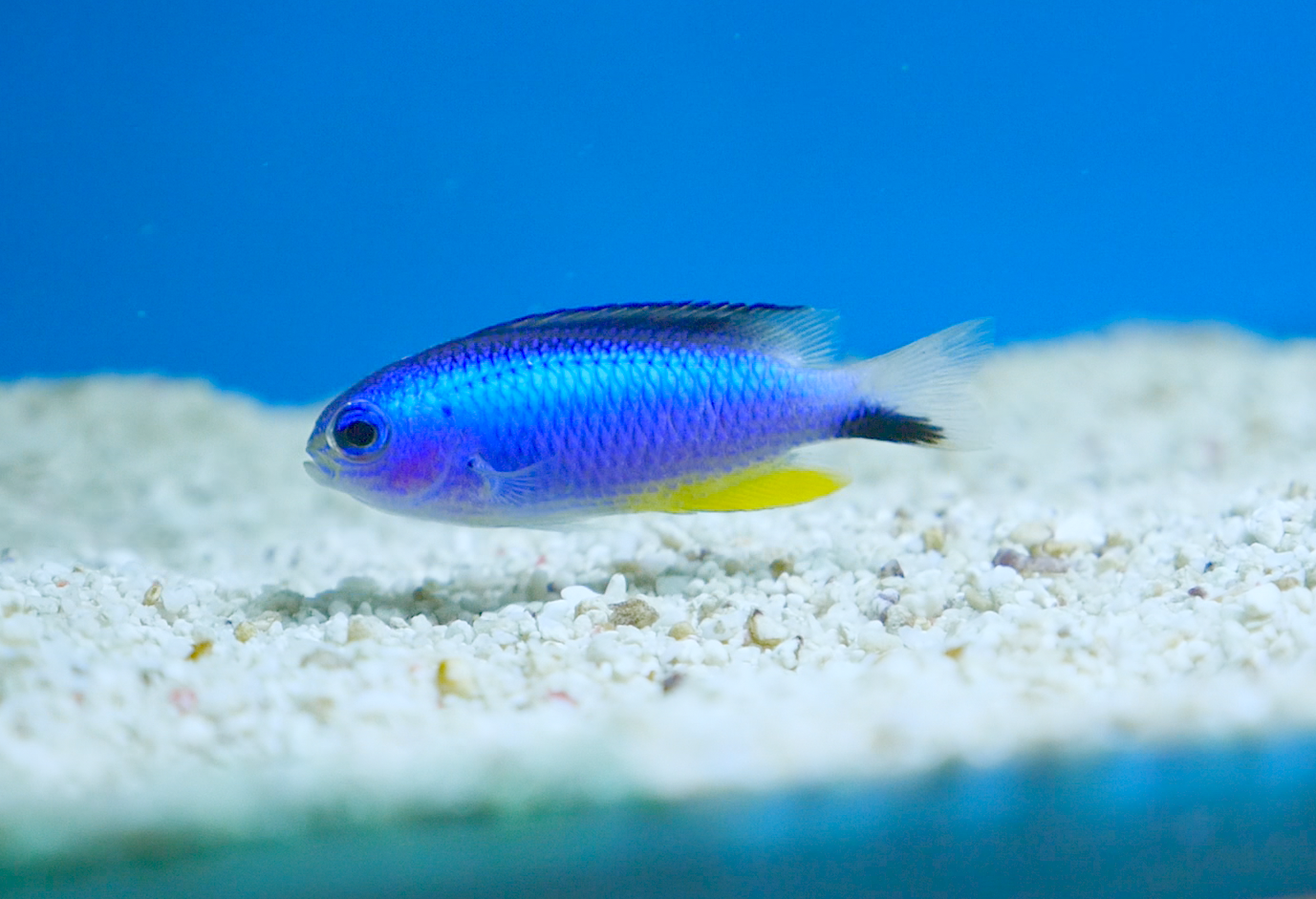
Dottybacks are similar to damsels in their vivid colour and potential aggression. There are some dazzling bullies such as the Magenta dottyback (Pictichromis porphyrea) and the much more placid Red Sea species like the gorgeous Orchid dottyback (Pseudochromis fridmani). These fish have lots of character but can be a risk to tiny shrimp or fish tank mates.
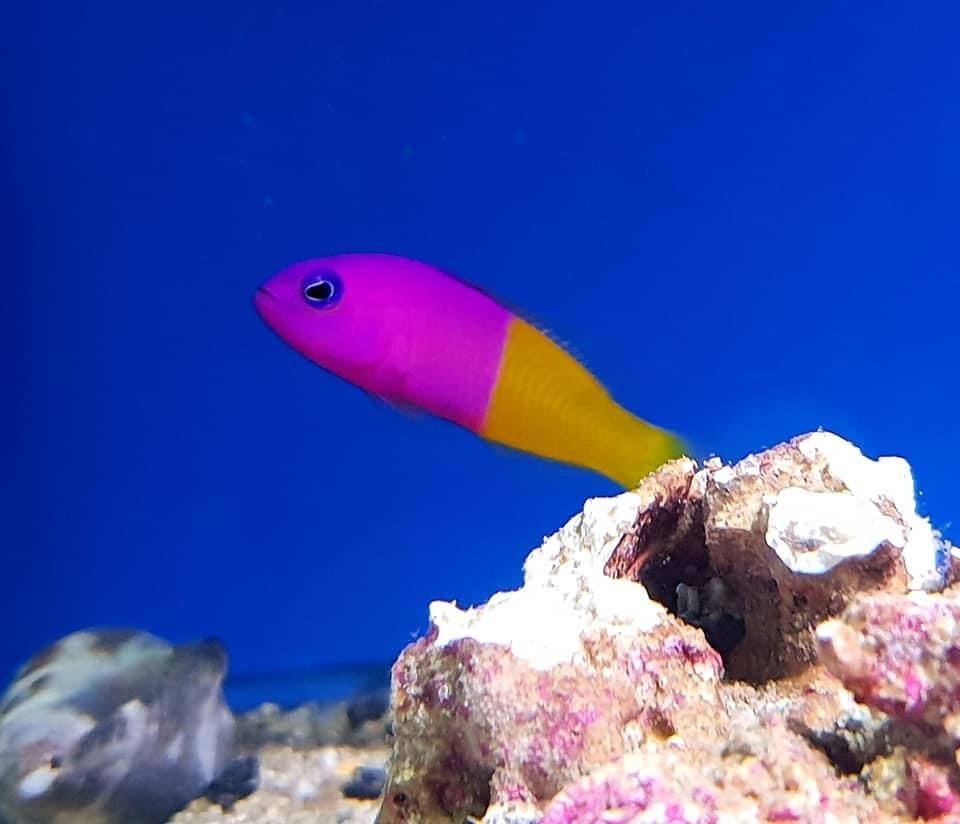
Basslets are generally more sociable and some, such as the Chalk bass (Serranus tortugarum) can even be kept in groups. The classic Royal gramma (Gramma loreto) is a member of this group and is hard to fault as an aquarium fish. As with dottybacks, ensure that tiny tank mates are too large to swallow.
Anthias are popular aquarium fish and excellent choices for reef aquaria if they get the frequent feeds they need. Deep water species such as Fathead anthias (Serranocirrhitus latus) are usually less demanding than Lyretail anthias (Pseudanthias squamipinnis). Note that males and females are often very different in colouration and size - single male/multiple-female shoals work well for these types.
Hawkfish are probably the best choice for those looking for character in a small package. Named for their habit of perching on coral or rock before swooping on prey items, these pose a significant risk to much smaller shrimps, crabs and fish. Smaller species have smaller mouths and appetites but it’s still safest to introduce even the gorgeous little Scarlet hawk (Neocirrhitus armatus) after invertebrates such as Cleaner shrimp have settled in. These clever fish soon learn that anything added to their tank later is usually food.
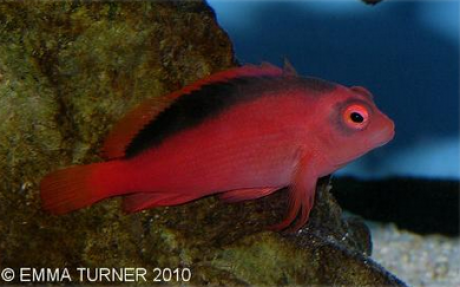
Cardinalfish are great reef aquarium residents but larger species may eat tiny shrimps. The Banggai cardinal (Pterapogon kauderni) is very popular and commonly bred in captivity. Unlike some cardinals, these confident fish associate with corals and anemones whilst others can be more shy. For those seeking a shoaling marine fish, this is a good family to start with and the Redspot cardinal (Ostorhinchus parvulus) is the closest thing to a saltwater tetra you’ll find. Being tiny, frequent feeding is essential and the safety of a large group will minimise stress.
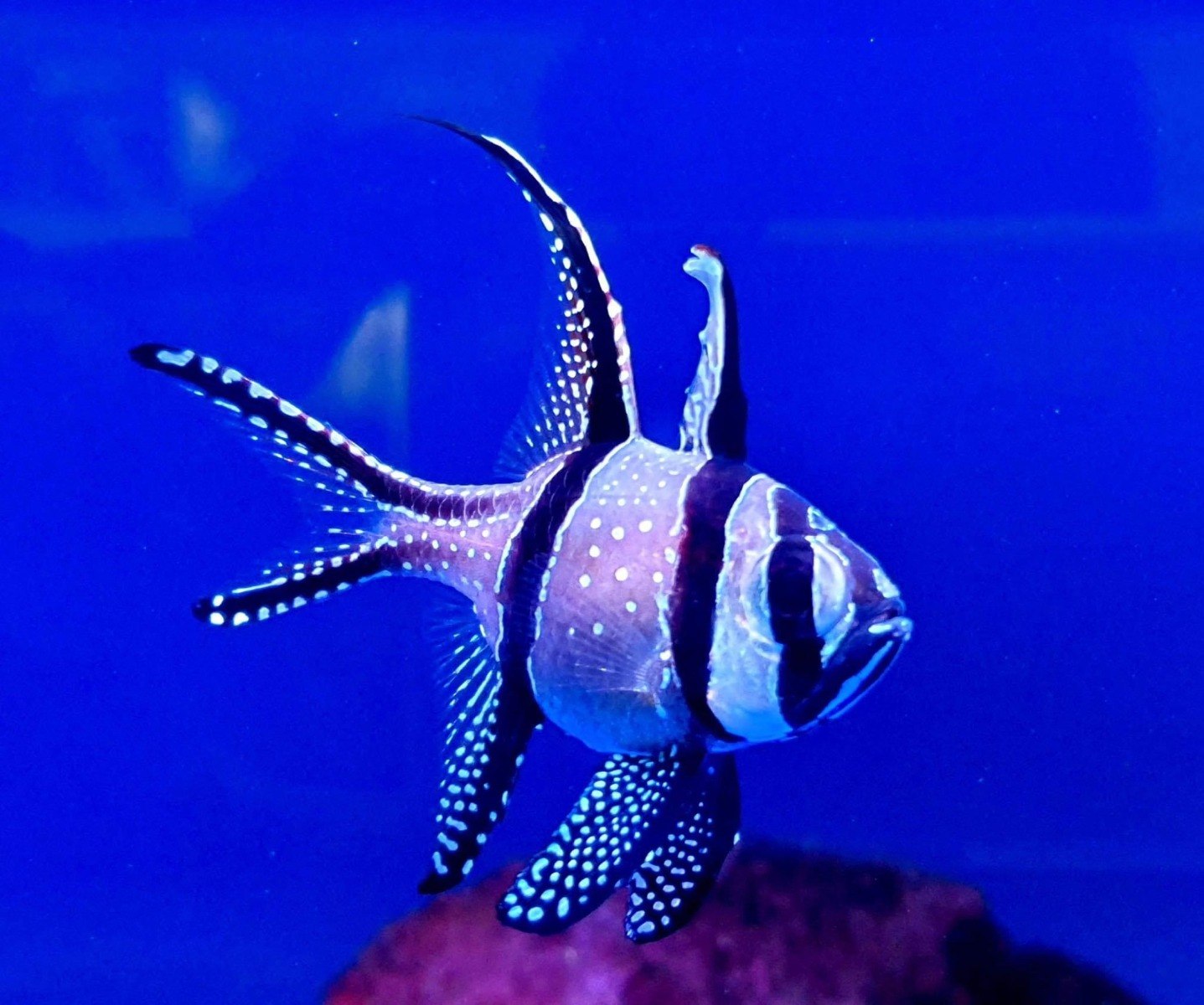
Tangs are a popular choice with some very well-known species, including the Regal tang (Paracanthurus hepatus) which goes by many names including Dory. All are substantial and need lots of space to avoid illness, especially the Powder blue tang (Acanthurus leucosternon). Given large aquaria, high oxygen levels and a diet that allows them to graze throughout the day, these are fairly undemanding pets. The alternative name of Surgeon fishes comes from a defensive ‘scalpel’ at the base of the tail - watch out for this when handling fish at close quarters.
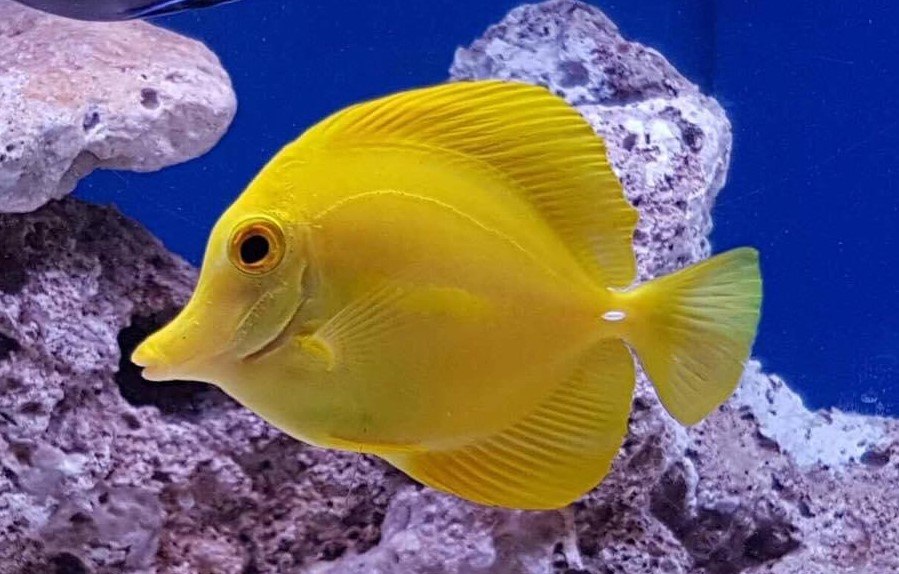
Rabbitfish have much in common with tangs but have venomous dorsal spines that they typically use when being netted or handled. More sociable than tangs, familiar species like the Foxface (Siganus vulpinus) are a good choice for controlling green algae.
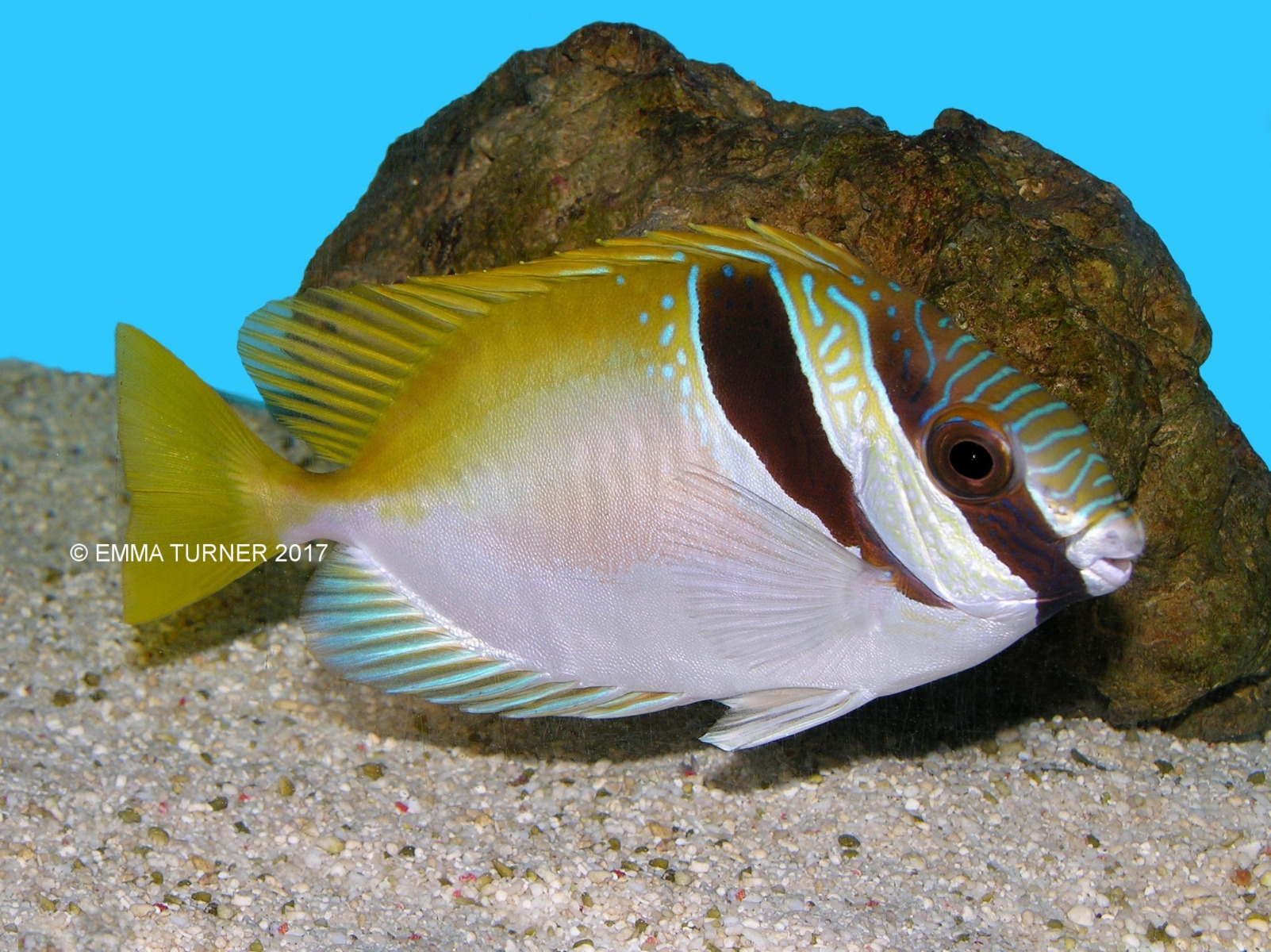
Butterflyfish are a very large family with some widely differing requirements. Many, such as the Threadfin butterfly (Chaetodon auriga) will eat corals and anemones plus a wide range of dry foods, making them a great choice for fish-only tanks but disastrous in a reef aquarium. Other species including the Copperband (Chelmon rostratus) are delicate feeders that can be safely kept with most corals. Some butterflies eat nothing but one or two species of hard coral and these should be avoided.
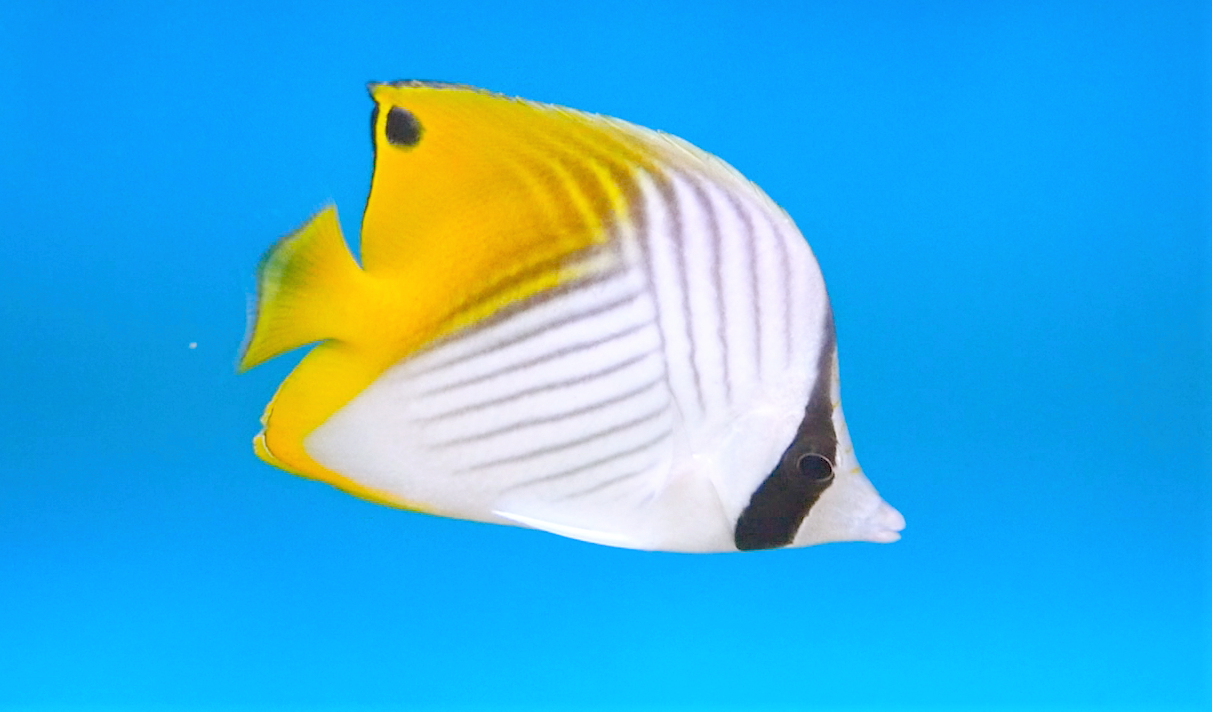
Dwarf angelfish can be slightly unpredictable in reef aquaria but have looks and character that are hard to resist. Like tangs, these grazers have the same dietary needs and enjoy browsing rocks for algae and sponges. They therefore prefer mature tanks with these conditions and this also allows less assertive tank mates to settle before having to contend with their rather territorial nature. Some species are rather more dwarf than others, with Cherub angels (Centropyge argi) being much smaller than Bicolour (C. bicolor).
Medium-sized angelfish include the rather more reef-friendly plankton-feeding Swallowtail angels (Genicanthus sp.) as well as the Regal angel (Pygoplites diacanthus) that thrives in well-furnished aquaria.
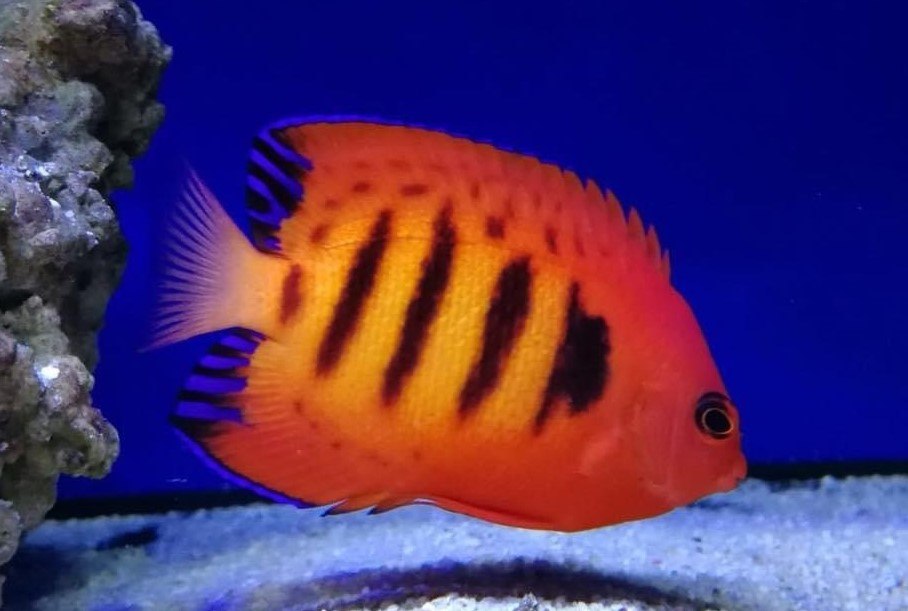
Large angelfish are some of the biggest commonly kept species but are well worth the effort. Often available in smaller sizes in their juvenile colouration, these beautiful fish combine many of the virtues and vices of their smaller cousins with the demands of tangs. At the top end of the scale, Emperor angels (Pomacanthus imperator) are stunning but can grow to over 30cm long and need suitably sized aquaria.
Like angelfish, Wrasses come in lots of shapes and sizes. Some of these, such as the Fairy wrasses (Cirrhilabrus sp.) are perfect for peaceful reef aquaria, as are the smaller members of the sand-diving genus Halichoeres. The Yellow (H. chrysus) and colourful melanurus wrasses also earn their keep by eating pests and can be kept in groups, with a single larger individual becoming a dominant male. Tamarin wrasses (Anampses sp.) are stunning fish that need mature reef tanks to thrive but also help by eating pests that damage corals. Although smaller, Cleaner wrasse (Labroides dimidiatus) need large tanks with big fish in order to do well in captivity. The mucous consumed from cleaning a variety of big fish seems to be an essential part of their diet, as well as the psychological need to exhibit their natural grooming behaviour.
Moving up the scale, the rowdy and active Thalassoma wrasses such as the Moon or Lunar are a good choice for large aquaria but will regard small fish, shrimps and crabs as food. Large Hogfishes are also in this category, with the beautiful Harlequin tuskfish (Choerodon fasciatus) being a huge personality and a charismatic pet.
Puffer and triggerfish are big on personality but often hard to house in reef tanks due to their sharp teeth and intellect, although Bluethroat triggers (Xanthichthys auromarginatus) and their close relatives are placid planktivores suitable for large reef tanks. Small puffers such as Valentini (Canthigaster valentini) are not as destructive as their larger kin but still best kept away from shrimps and snails.
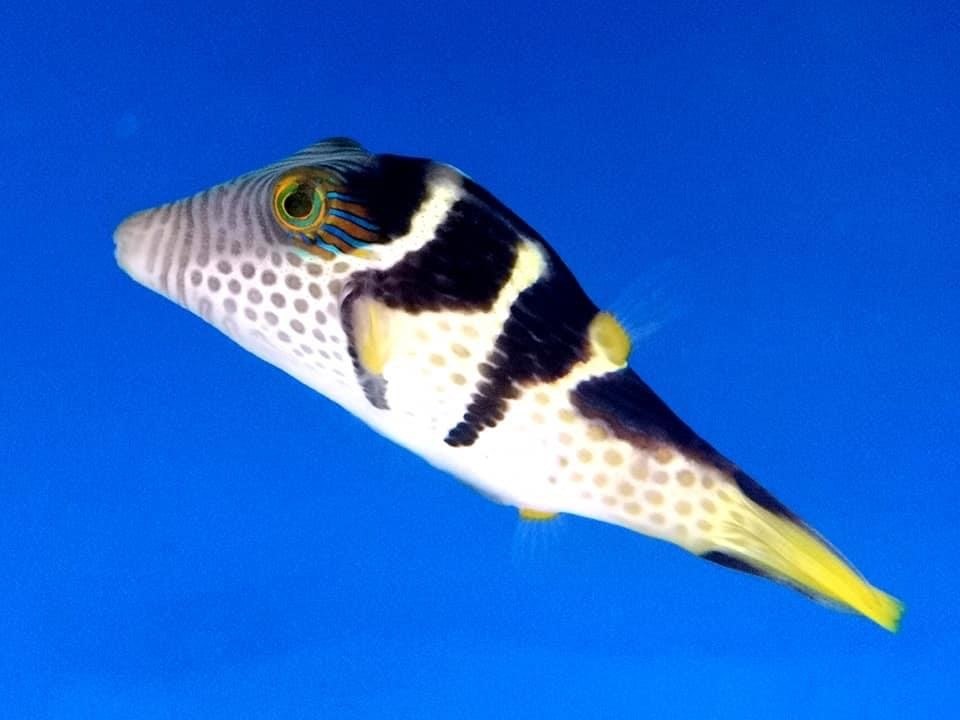
Gobies are a huge family and aquarium forms range from substantial sifters like Blue-cheek gobies (Valenciennea strigata) that need large, uncluttered tanks with deep sand, to Firecracker gobies (Trimma sp.) which are perfect for nano-sized aquaria. Coral gobies (Gobiodon) are also perfect for reef tanks and Neon gobies (Elactinus oceanops) will control parasites much like cleaner wrasse while thriving in smaller tanks.
Blennies are very entertaining and many eat algae to earn their keep as cleaners. Bicolour blennies (Escenius bicolor) and their close relatives are a good combination of colour, charisma and hardiness in a package that suits smaller aquaria. The Algae blenny (Salarias fasciatus) is a prolific algae-eater that needs lots of grazing to stay healthy.
Shrimps are a family with some important members. Some such as Cleaner shrimp (Lysmata amboinensis) are popular reef tank species that do little harm aside from occasionally robbing corals and anemones of tasty food items. Although also cleaners, the more heavily-armed Boxing shrimp (Stenopus hispidus) are less social, living singularly or in mated pairs and posing a risk to other shrimp in small tanks. Sexy shrimp (Thor amboinensis) get their name from their tail-wiggling habit and live alongside corals and anemones. Perfect for nano-sized tanks, these are the ‘tiny shrimps’ mentioned above that are most at risk of being eaten by larger fish. Although common in stores, Dancing shrimp (Rynchocinetes durbanensis) aren’t to be trusted in most reef aquaria, although another species with an appetite for anemones - the Peppermint shrimp (Lysmata wurdemanni) can be useful in controlling the pest Aiptasia. All shrimp species can suffer when exposed to rapid changes in salinity, take care to acclimatise them carefully when adding them to your system.
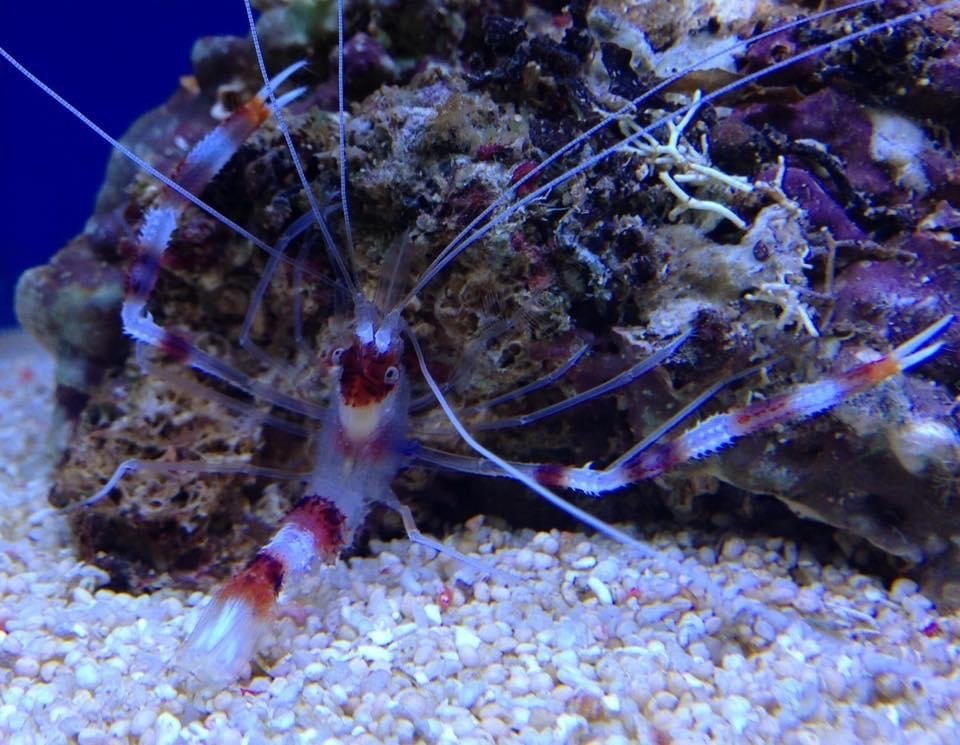
Crabs can be destructive but the largely herbivorous Emerald crab (Mithraculus sculptus) can be a useful algae grazer. Hermit crabs are more familiar in reef aquaria with the small Blue-legged (Clibanarius tricolor) and Red-legged (Paguristes cadenati) being particularly useful. In the absence of algae, they will eat most foods suitable for grazing fish. Like the shrimps, avoid rapid changes in water chemistry.
Snails are popular algae grazers with Turbo snails (Turbo, Astrea) being the most common. When adding these, make sure they’re placed on a hard surface such as glass or rocks - some may struggle to move on the sand and can starve as a result.
Starfish and Urchins are often added to reef aquaria and care should be taken not to expose them to rapid changes in salinity or to remove starfish from the water, as air trapped in their vascular channels can be fatal. As well as algae, urchins will eat fish foods. Be aware that the Knobbed starfish types (Protoreaster sp.) are predators capable of eating corals. Sea cucumbers such as the colourful Sea Apples (Pseudocolochirus sp.) are filter-feeders that can release powerful toxins when stressed and should only be added with caution.
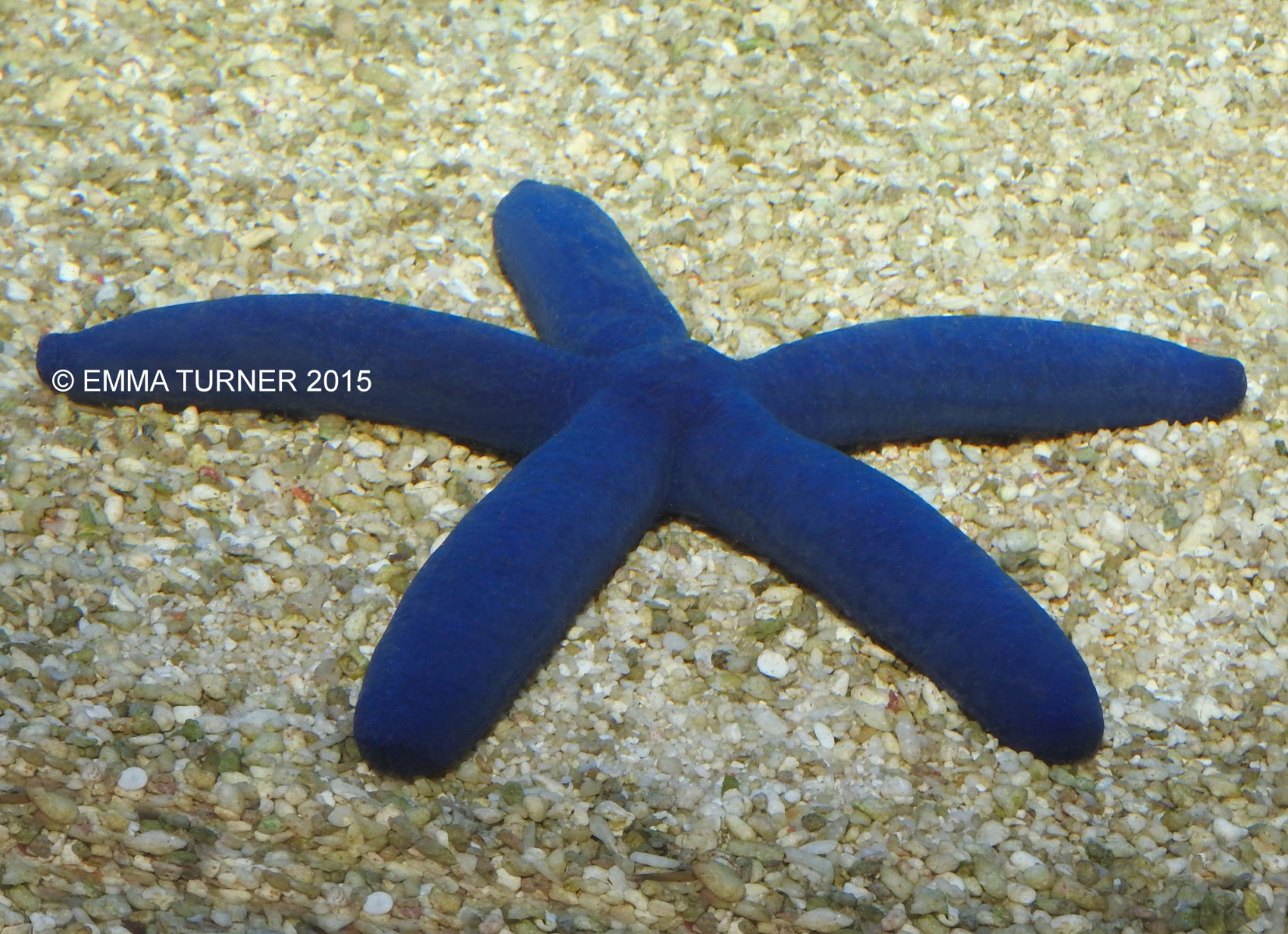
Anemones have much in common with corals and those that host clownfish will need strong lighting and gross feeding. Note that large clowns can stress small anemones and prevent them from opening. Carpet anemones (Stichodactyla sp.) are strong stingers capable of eating tank mates and inflicting rashes on delicate areas of human skin. As with all anemones, consider adding them before corals to allow them to wander and settle before damaging static neighbours. Bubble anemones (Entacmaea quadricolor) are probably the best choice, with the red forms being hardy and capable of reproducing in captivity.
Tube Anemones (Cerianthus sp.) are distant relatives that need a deep layer of substrate and regular feeding due to a lack of symbiotic algae. As with carpet anemones, choose tankmates with care.
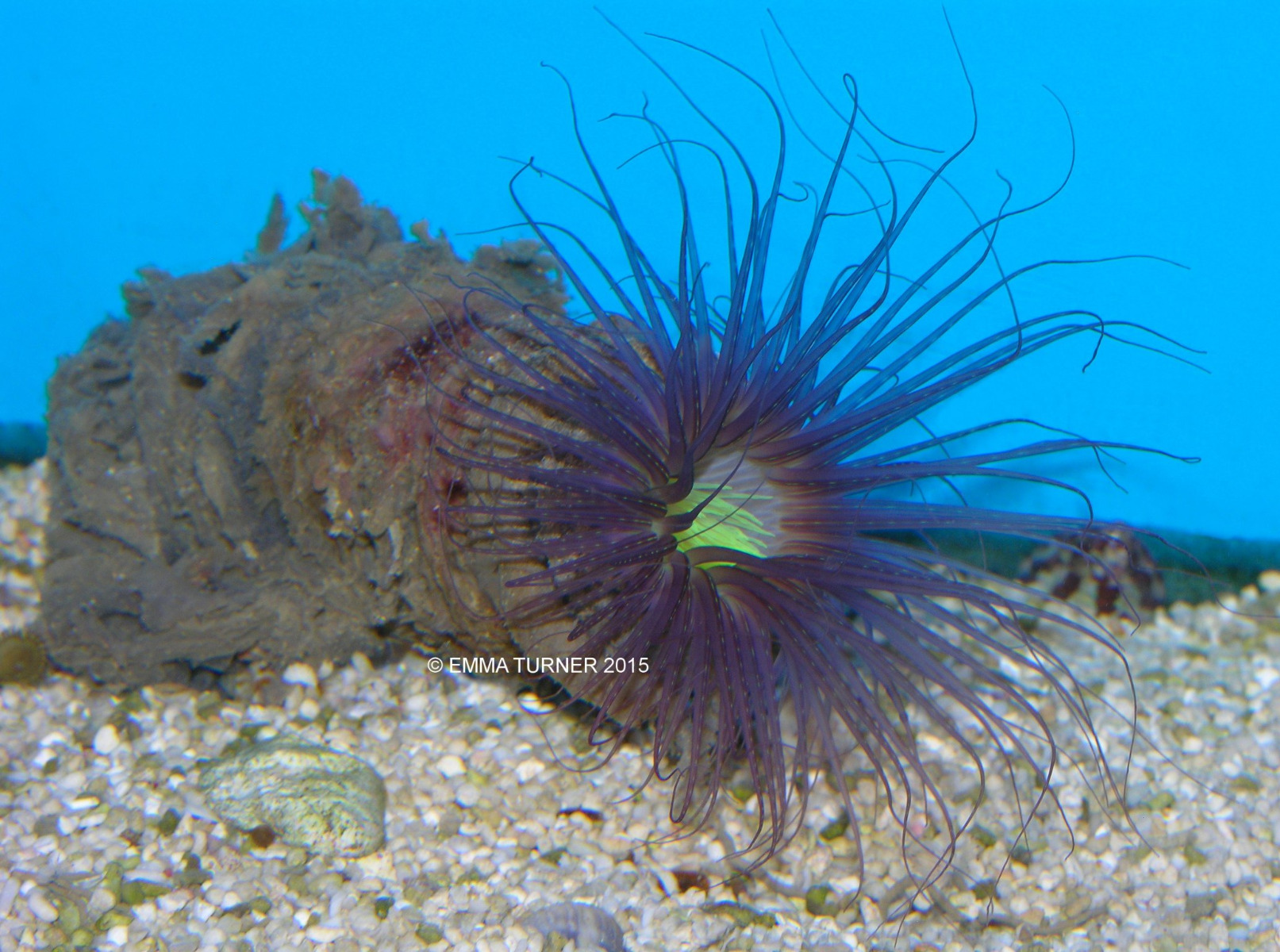
Corals are a very diverse group with a wide range of differing requirements. Soft corals are often best for beginners, being more tolerant of lower lighting levels and less demanding of water quality and supplementation. Colonial polyp types may need direct feeding to thrive and can be a “halfway house” between anemones and corals.
Generally speaking, small-polyped hard corals (SPS) need strong lighting, low nutrient levels, supplementation with trace elements and good water movement. High temperatures can cause bleaching and a chiller may be necessary to prevent problems during hot summers. Large-polyped hard corals (LPS) are generally more tolerant of high nutrient levels and prefer less dramatic water movement but may need frequent meals of large-particle food. All corals should be handled with care and encouraged to withdraw into their bases if removal from water is necessary.
